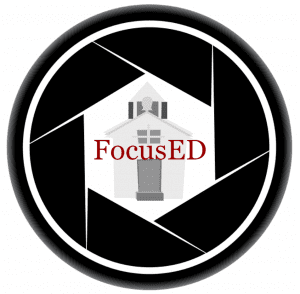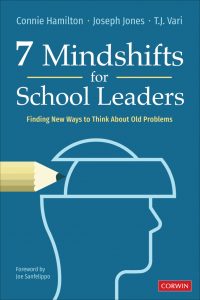
Season 3, Episode 14 of FocusED with Joe Sanfelippo #FocusED
This is Season 3, Episode 14 of FocusED, and it features our guest, Joe Sanfelippo. It was originally recorded live for a studio audience in Delaware, provided as a professional development experience for Delaware teachers and leaders. Don’t miss what Dr. Sanfelippo says about what it means to lead from anywhere and how leaders build intention, connection, and direction in schools.
_______________________________________
Joe Sanfelippo Brings Tons of Experience to FocusED Listeners
Dr. Joe Sanfelippo is the Superintendent of the Fall Creek School District in Fall Creek, WI. The Fall Creek School District was named an Innovative District in 2016 and 2017 by the International Center for Leadership in Education. Joe holds a BA in Elementary and Early Childhood Education from St. Norbert College, a MS in Educational Psychology from the University of Wisconsin-Milwaukee, a MS in Educational Leadership, and a PhD in Leadership, Learning, and Service from Cardinal Stritch University.
Joe is also an adjunct professor in the Educational Leadership Department at Viterbo University. Joe has taught Kindergarten, 2nd Grade, and 5th Grade. He was a school counselor and high school coach prior to taking on an elementary principal position in 2005. He has served as a principal in suburban and rural Wisconsin.
Joe started the #1minwalk2work Leadership Challenge, and co-authored:
The Power of Branding-Telling Your School’s Story,
Principal Professional Development: Leading Learning in a Digital Age,
Hacking Leadership: 10 Ways Great Leaders Inspire Learning That Teachers, Students and Parents Love,
and his new book is Lead From Where You Are: Building Intention, Connection, and Direction in Our Schools.
He was selected as 1 of 117 Future Ready Superintendents in 2014 and 1 of 50 Superintendents as a Personalized Learning Leader in 2016 by the US Department of Education. He attended summits at the White House for both distinctions. Education Dive named Joe 1 of 5 K-12 administrators to watch in 2018 and their National Superintendent of the Year in 2019.
He has been a featured speaker in multiple states in the areas of Advancing the Use of Social Media for School Leaders, Telling Your School Story, Creating a Culture of Yes, and Personalized Professional Growth for Staff.
Go Crickets!!
FocusED Show Notes with Joe Sanfelippo
Joe wrote his new book as a legacy piece. Listen to what he says about his kids and leaving something behind.
His insight about leading from a position of isolation is powerful.
Joe sees a lot of leaders asking the same questions, that often have answers, but that everyone is asking in their own bubbles.
Joe recommends balance in your emotional state when making decisions. You have to hear what he says about the highs and lows of school leadership.
Joe talked about better student ownership through adult learning. When adults like what they’re learning, they’re more likely to translate that for kids.
When it comes to “resources,” Joe says that teachers and leaders should have a core group to go to for reflection and support.
Don’t miss what Joe says about amplifying your school’s message.
Joe’s final message about treating everything like it matters is inspiring.
Great Quotes from Joe Sanfelippo
If you get locked into your own thinking, you miss the opportunity to build capacity for how you lead. ~ Dr. Joe Sanfelippo
As long as you have people who are honest with you, you’re going to be in a better place. ~ Joe Sanfelippo
We have to remember that people are just starting out in leadership. ~ Dr. Joe Sanfelippo
Questions Asked by Joe Sanfelippo on FocusED
What do you do to put yourself in the right mindset to run your school?
What are the ten things you do when you get to school?
How can we make more intentional decisions?
Thanks for listening to FocusED, an educational leadership podcast brought to you by theschoolhouse302.com where we publish free leadership content. Go to the site, subscribe, and you’ll get all of our content sent directly to your email.
FocusED is your educational leadership podcast where our mission is to dissect a particular focus for teachers and school leaders so that you can learn to lead better and grow faster in your school or district with more knowledge, better understanding, and clear direction on what to do next.
This episode was brought to you by GhostBed, a family-owned business of sleep experts with 20+ years of experience. With 30K+ 5-star reviews, you can’t go wrong with GhostBed. Their mattresses are handcrafted, and they come with a 101-night-at-home-sleep trial. For a limited time, you can get 30% by using our code — SH302 — at checkout. And, even if you tell someone about GhostBed, you can earn a $100 referral reward. Go to Ghostbed.com today and use SH302 at checkout.













 7 Mindshifts for School Leaders: Finding New Ways to Think About Old Problems.
7 Mindshifts for School Leaders: Finding New Ways to Think About Old Problems. 


